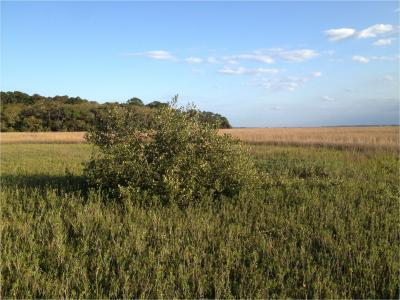While the number of killing frosts in southern Florida has remained unchanged since 1984, the number a short distance away declined enough that researchers are implicating global warming, and noted that the expansion of cold-sensitive mangrove forests along Florida's Atlantic Coast has led to them edging out salt marshes.
What happens when one ecosystem replaces another? Happens all of the time, of course, and has throughout history. But it's impossible to predict the result. People who live there are not complaining, though researchers up north are concerned.
Between 1984 and 2011, the Florida Atlantic coast from the Miami area northward gained more than 3,000 acres (1,240 hectares) of mangroves, according to satellite data analyzed by the University of Maryland and the Smithsonian Environmental Research Center in Edgewater, Maryland. All the increase occurred north of Palm Beach County. Between Cape Canaveral National Seashore and Saint Augustine, mangroves doubled in area. Meanwhile between the study's first five years and its last five years, nearby Daytona Beach recorded 1.4 fewer days per year when temperatures fell below 28.4 degrees Fahrenheit (-4 degrees Celsius). The number of killing frosts in southern Florida was unchanged.
Unlike studies which focus on changes in average temperatures, the analysis in the Proceedings of the National Academy of Sciences founds that changes in the frequency of rare, severe events can determine whether landscapes hold their ground or are transformed by climate change.
One ecosystem replaces another – at what cost?
"Some people may say this is a good thing, because of the tremendous threats that mangroves face," said the study's lead author, Kyle Cavanaugh, a Smithsonian postdoctoral research fellow. "But this is not taking place in a vacuum. The mangroves are replacing salt marshes, which have important ecosystem functions and food webs of their own."

A newly established black mangrove grows amid salt marsh plants north of St. Augustine, Florida, near the northern limit of this cold-sensitive tropical tree's range. Mangroves are expanding into North Florida as killing frosts become rare there. Courtesy of Kyle C. Cavanaugh
Mangrove forests grow in calm, shallow coastal waters throughout the tropics. Salt marshes do the same in temperate zones. Some animals use both types of habitat. Others, like marsh-nesting seaside sparrows or the honey bees that produce mangrove honey, rely on one or the other. Both provide valuable ecosystem services, buffering floods, storing atmospheric carbon and building soils. Both are in decline nationally and globally. Mangrove forests are cut down for charcoal production, aquaculture and urbanization or lose habitat to drainage projects. Salt marshes are threatened by drainage, polluted runoff and rising sea levels.
Florida naturalists noticed that mangroves now grow in places that once were too chilly for the tropical trees. "We knew this was happening, but no one knew if it was a local or a regional phenomenon," Cavanaugh said.
Study used satellite photos, the "gold standard" in climate change
The authors turned to photographs of Florida's Atlantic coast taken by Landsat 5, a satellite launched by NASA and the USGS in 1984 to track changes in Earth's land cover. Landsat 5 kept working until 2011. "It very quickly became a gold standard to examine the effects of climate change, because it lets you look back in time," Cavanaugh said.
The satellite images revealed the mangroves' expansion into terrain formerly inhabited by salt marsh plants. While the study only looked at the Atlantic Coast, the same trend is taking place on Florida's Gulf Coast, they noted.
Mean winter temperatures have risen at seven of eight coastal weather stations in the study area. But if overall warming benefited mangroves, the mangrove cover should have increased all over Florida, not only in the north. Average winter temperature, rainfall, and urban or agricultural land use did not explain the mangroves' expansion. Only fewer freezing days at the northern end of their range matched the trend.
The researchers are studying effects on coastal insects and birds; whether the change will affect coastal ecosystems' ability to store carbon; and whether juvenile fish and commercially valuable shellfish will remain abundant in the changing plant communities.
Cavanaugh is looking at Landsat 5 imagery for Mexico, Peru, Brazil, Australia and New Zealand to see if mangroves are expanding elsewhere as they are in Florida.




Comments